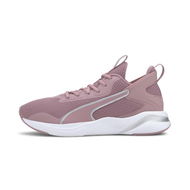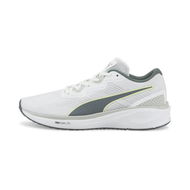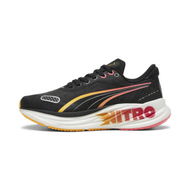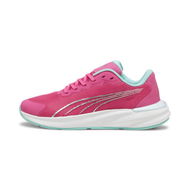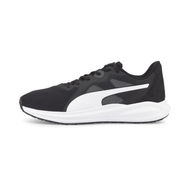Choosing the Correct Runners for Health and Performance
RedTicket - 2023-11-02
The Importance of Selecting Suitable Running Footwear
The Necessity of Opting for Appropriate Running Footwear - You might be able to run in just about any shoe, but choosing the correct running footwear is key to preventing discomfort and injury. Running shoes are specifically designed with a thicker heel to cushion impact and a heel-to-toe drop that aligns with the natural movement of running, offering a more organic feel underfoot.
Benefits of the Ideal Running Shoe - The right pair of running shoes can safeguard against injuries, provide a solid base for your body, and make logging those kilometres a much more pleasurable experience. Whether you're a casual jogger or a marathon enthusiast, the perfect shoe should feel comfortable from the start and should complement your running style.
Impact of Shoes on Your Feet, Legs, and Body - Incorrect fitting shoes, whether they're too tight, too loose, or lack support—can lead to undue stress on your feet, ankles, and legs, as well as other joints, potentially causing discomfort and injury due to this persistent strain.
Differences Between Walking and Running Footwear - While walking shoes offer more flexibility and bending, running shoes typically have a more rigid sole and include larger heel wedges for added cushioning. A thick heel on walking shoes can cause issues like tendonitis and shin splints, and may even cause walkers to trip if they're wearing running shoes.
Supporting Your Feet with Running Shoes - Running is beneficial for your health but can be hard on your feet. Common issues include plantar fasciitis, heel pain, and shin splints, particularly for those with flat feet. Therefore, selecting the right running shoes is crucial. Here are some features to consider:
Heel Cup - Heel cups are orthotic devices placed under the heel to offer support and cushioning, helping to alleviate heel pain for various conditions, including plantar fasciitis and prolonged standing. They can enhance the comfort of your shoes during everyday activities.
Arch Supports (Orthoses) - Orthotics can alter the angles at which feet strike the ground, improving comfort and efficiency in standing, walking, and running. Inserting orthotics in your shoes can relieve pressure on sore spots, improve balance, and provide shock absorption.
Understanding Pronation - Pronation is the inward rolling of the foot to reduce impact during landing. It's a natural part of movement but varies among individuals. Pronation occurs when your foot hits the ground to absorb the shock.
Selecting Running Shoes for Different Pronation Types - Gait analysis is the best way to learn about your foot type, where a professional can assess your running style. While wear patterns on your shoe soles can offer clues, they don't tell the whole story.
This analysis can guide you in choosing running shoes with the right cushioning and support.
Pronated Feet - Maximum Support - Shoes with maximum support are designed to control excessive pronation. They typically feature a carbon rubber outsole for durability, maximum ground contact, and stability.
Neutral Feet - Cushioned Shoes - Cushioned neutral shoes are generally lightweight and lack motion control features, providing a softer feel and facilitating faster movement. They are ideal for lighter individuals with neutral foot types or those who use orthotics. Heavier individuals with neutral feet might consider structured cushioning shoes for additional support.
Supinated Feet - Stability - Stability shoes offer a balance between motion control and cushioning. They provide adequate support without the bulk and rigidity of maximum support running shoes and are a popular choice among fitness enthusiasts.
Additional Factors to Consider
When to Replace Your Running Shoes - Typically, running shoes should be replaced eroughly every 500km's, which is about the distance covered when training for a marathon. After this mileage, most shoes will have significant wear and may not offer the necessary support. Heavier runners may need to replace their shoes more frequently than lighter runners.
Choosing Function Over Style - It's essential to focus on the fit, comfort, and functionality rather than the appearance of the shoe. The right shoe for your individual needs is more important than its looks. Specialists like those at top footwear retailers can assist in finding the right mix of style, comfort, and health for your feet.
Products Relating to Choosing the Correct Runners for Health and Performance
Other Interesting Articles
1. Questions to Ask When Buying a Pet Bird?
2. Choosing the Best Football (Soccer) Boots
3. Join the Solar Revolution - Solar Garden Lighting and Ornaments
4. The Ultimate Headphone Guide
5. NEW rebel Active Rewards Program
This article appears in
Footwear,
Junior,
Kids,
Mens,
Other,
Running,
Running,
Running Shoes,
Running Shoes,
Shoes,
Shoes & Footwear,
Trainers,
Trainers,
Trainers,
Womens,
Womens


